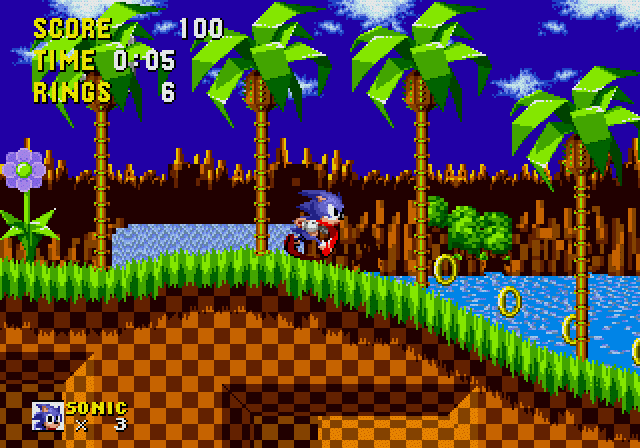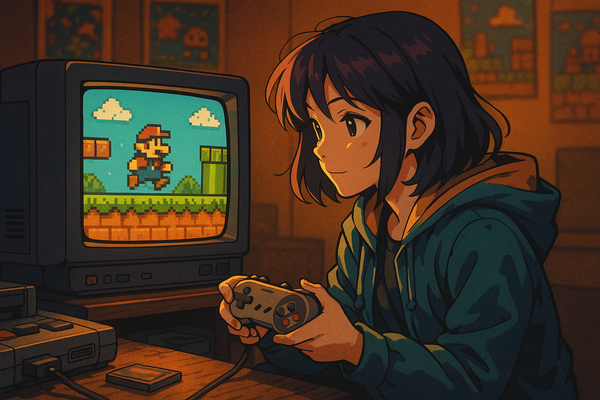Sega Genesis (Mega Drive): The console that defined a generation
Released in 1988 in Japan (as the Mega Drive) and 1989 in North America (as the Sega Genesis), Sega’s 16-bit console marked a significant step forward in gaming. Designed to deliver arcade-quality games to home players, the Genesis was Sega’s bold challenge to Nintendo’s dominance in the market. Its sleek design, advanced hardware, and aggressive marketing helped position it as the go-to console for gamers looking for fast-paced action, sharp visuals, and unforgettable experiences.

With its Motorola 68000 processor, 64 KB of RAM, and support for vibrant 16-bit graphics and stereo sound, the Genesis was a powerhouse for its time. The console’s hardware enabled smoother animations, richer soundtracks, and more complex gameplay than its competitors, particularly the aging NES. The Genesis introduced gamers to titles that were not only visually impressive but also pushed the boundaries of what video games could achieve.
Sega’s “Genesis Does What Nintendon’t” campaign
One of the most memorable aspects of the Genesis’s rise to fame was Sega’s bold marketing campaign. The slogan “Genesis Does What Nintendon’t” took direct aim at Nintendo, emphasizing the Genesis’s superior graphics, speed, and game library. Sega targeted older players, positioning the Genesis as the cooler, edgier choice for gamers who had outgrown Nintendo’s family-friendly image.
This marketing strategy resonated with teenagers and young adults, helping Sega establish a strong foothold in the market. The Genesis’s library featured arcade hits like Altered Beast, Golden Axe, and Streets of Rage, which appealed to players looking for action-packed and visually striking games. Sega’s approach worked, and the Genesis became a cultural phenomenon in the early 1990s.
Sonic the Hedgehog: A Game-Changing mascot
While the Genesis had a strong start, its true breakout moment came in 1991 with the release of Sonic the Hedgehog. Designed as Sega’s answer to Nintendo’s Mario, Sonic was a blue hedgehog with attitude, speed, and style. The game’s fast-paced platforming, colorful graphics, and catchy soundtrack made it an instant classic.

Sonic the Hedgehog introduced players to the lush Green Hill Zone, filled with loops, springs, and enemies to defeat. Sonic’s trademark speed was a game mechanic that set it apart from other platformers, offering a sense of momentum and flow that was exhilarating and addictive. The game’s technical achievements, including parallax scrolling backgrounds and smooth animations, showcased the Genesis’s hardware capabilities.
Sonic quickly became Sega’s mascot, embodying the company’s edgy and rebellious image. Sonic the Hedgehog not only helped sell millions of Genesis consoles but also cemented Sega’s place as a serious competitor to Nintendo. The game’s success spawned multiple sequels, cartoons, and merchandise, turning Sonic into a pop culture icon.
The Genesis library: A Gamer’s paradise
The Sega Genesis boasted a diverse and impressive library of games that appealed to a wide range of players. From sports titles like Madden NFL and NBA Jam to RPGs like Phantasy Star IV, the Genesis had something for everyone. The Shining Force series introduced many players to tactical RPGs, while Gunstar Heroes pushed the limits of action gaming.
Sega also partnered with third-party developers like Electronic Arts, which brought a wealth of titles to the platform. The Genesis became known for its arcade-style games, thanks to Sega’s history as a leading arcade developer. Games like OutRun, After Burner II, and Virtua Racing brought the thrill of the arcade to living rooms, further solidifying the console’s reputation.
The console wars: Genesis vs. Super Nintendo
The Genesis’s success led to one of the most iconic rivalries in gaming history: the Console Wars between the Sega Genesis and the Super Nintendo Entertainment System (SNES). Both consoles had their strengths, but Sega’s aggressive marketing and edgy image gave it an edge with certain audiences. The rivalry pushed both companies to innovate, resulting in a golden era for video games.
While the SNES eventually outsold the Genesis worldwide, Sega’s console maintained a loyal fanbase and a strong presence in key markets like North America and Europe. The competition between the two systems elevated gaming to new heights, creating a rich ecosystem of memorable games and experiences.
The legacy of the Sega Genesis
The Sega Genesis remains one of the most beloved consoles in gaming history. Its influence can still be felt today, as many of its games have been re-released on modern platforms, and its legacy lives on through dedicated fan communities and retro enthusiasts. Sonic the Hedgehog remains one of gaming’s most enduring mascots, and Sega’s bold approach to marketing and game design set a standard that continues to inspire.
For millions of players, the Genesis was more than just a console—it was a gateway to unforgettable adventures, friendships, and memories. Its combination of technical innovation, iconic games, and cultural impact has cemented the Genesis as a cornerstone of the gaming industry.


